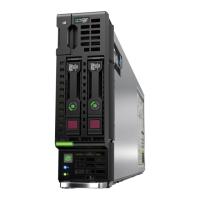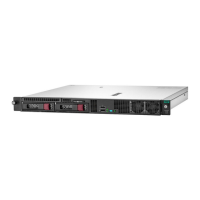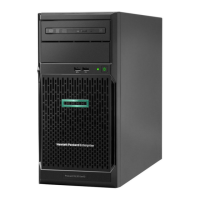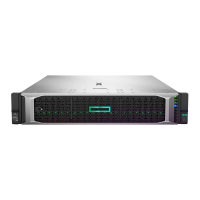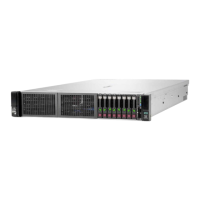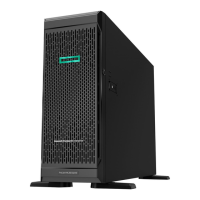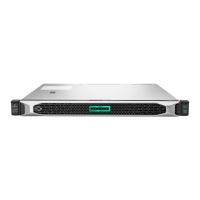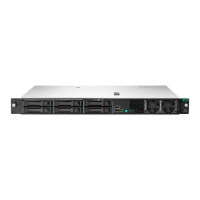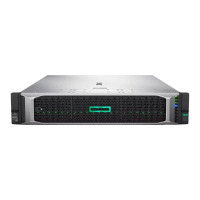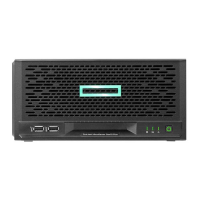10. Install any components removed to access the DIMM slots and the HPE Smart Storage Battery.
11. Install the access panel on page 23.
12. Install the server blade on page 42.
13. Power up the server blade on page 21.
14. If required, sanitize the NVDIMM-Ns. For more information, see NVDIMM sanitization on page 64.
Configuring the server blade for NVDIMMs
After installing NVDIMMs, configure the server blade for NVDIMMs. For information on configuring
settings for NVDIMMs, see the HPE 16GB NVDIMM User Guide on the Hewlett Packard Enterprise
website (
http://www.hpe.com/info/nvdimm-docs).
The server blade can be configured for NVDIMMs using either of the following:
• UEFI System Utilities—Use System Utilities through the Remote Console to configure the server blade
for NVDIMM memory options by pressing the F9 key during POST. For more information about UEFI
System Utilities, see the Hewlett Packard Enterprise website (http://www.hpe.com/info/uefi/docs).
• iLO RESTful API for HPE iLO 5—For more information about configuring the system for NVDIMMs,
see https://hewlettpackard.github.io/ilo-rest-api-docs/ilo5/.
Saving system default settings as user default settings
After configuring the NVDIMM settings for the server blade, Hewlett Packard Enterprise recommends
saving the settings as the user default settings. To save the settings, do the following:
Procedure
1. From the System Utilities screen, select System Configuration —> BIOS/Platform Configuration
(RBSU) —> System Default Options —> User Default Options, and press the Enter key.
2. Select Save User Defaults, and press the Enter key.
3. Select Yes, Save to save the current settings as the system default settings, and then press the Enter
key.
4. Press the F10 key to save the changes.
For more information about changing the settings, see the UEFI System Utilities User Guide for your
server blade on the Hewlett Packard Enterprise website (http://www.hpe.com/info/UEFI/docs).
NVDIMM sanitization
Media sanitization is defined by NIST SP800-88 Guidelines for Media Sanitization (Rev 1, Dec 2014) as
"a general term referring to the actions taken to render data written on media unrecoverable by both
ordinary and extraordinary means."
The specification defines the following levels:
64 Hardware options installation
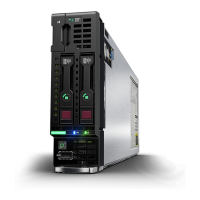
